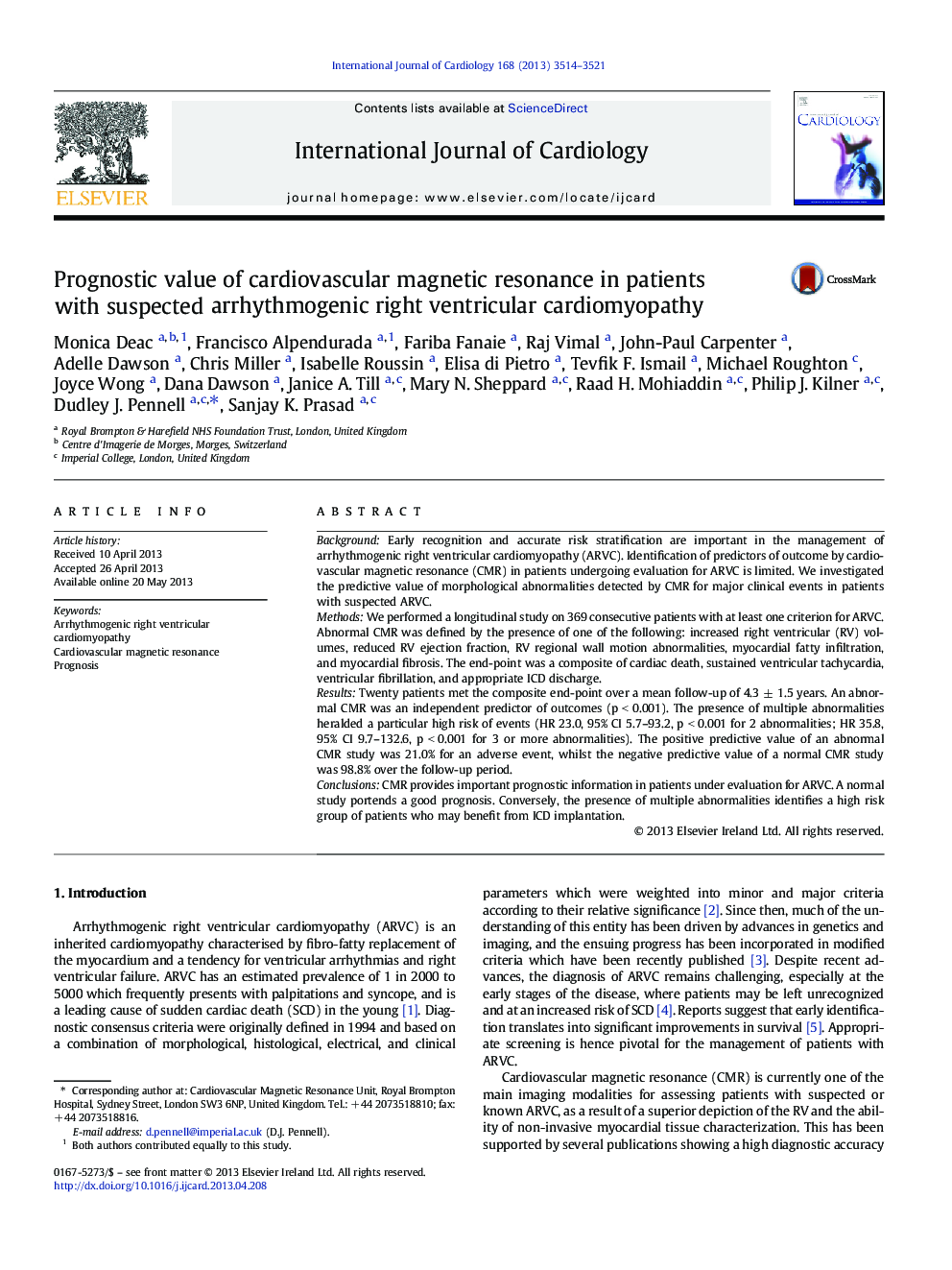| Article ID | Journal | Published Year | Pages | File Type |
|---|---|---|---|---|
| 5973703 | International Journal of Cardiology | 2013 | 8 Pages |
BackgroundEarly recognition and accurate risk stratification are important in the management of arrhythmogenic right ventricular cardiomyopathy (ARVC). Identification of predictors of outcome by cardiovascular magnetic resonance (CMR) in patients undergoing evaluation for ARVC is limited. We investigated the predictive value of morphological abnormalities detected by CMR for major clinical events in patients with suspected ARVC.MethodsWe performed a longitudinal study on 369 consecutive patients with at least one criterion for ARVC. Abnormal CMR was defined by the presence of one of the following: increased right ventricular (RV) volumes, reduced RV ejection fraction, RV regional wall motion abnormalities, myocardial fatty infiltration, and myocardial fibrosis. The end-point was a composite of cardiac death, sustained ventricular tachycardia, ventricular fibrillation, and appropriate ICD discharge.ResultsTwenty patients met the composite end-point over a mean follow-up of 4.3 ± 1.5 years. An abnormal CMR was an independent predictor of outcomes (p < 0.001). The presence of multiple abnormalities heralded a particular high risk of events (HR 23.0, 95% CI 5.7-93.2, p < 0.001 for 2 abnormalities; HR 35.8, 95% CI 9.7-132.6, p < 0.001 for 3 or more abnormalities). The positive predictive value of an abnormal CMR study was 21.0% for an adverse event, whilst the negative predictive value of a normal CMR study was 98.8% over the follow-up period.ConclusionsCMR provides important prognostic information in patients under evaluation for ARVC. A normal study portends a good prognosis. Conversely, the presence of multiple abnormalities identifies a high risk group of patients who may benefit from ICD implantation.
